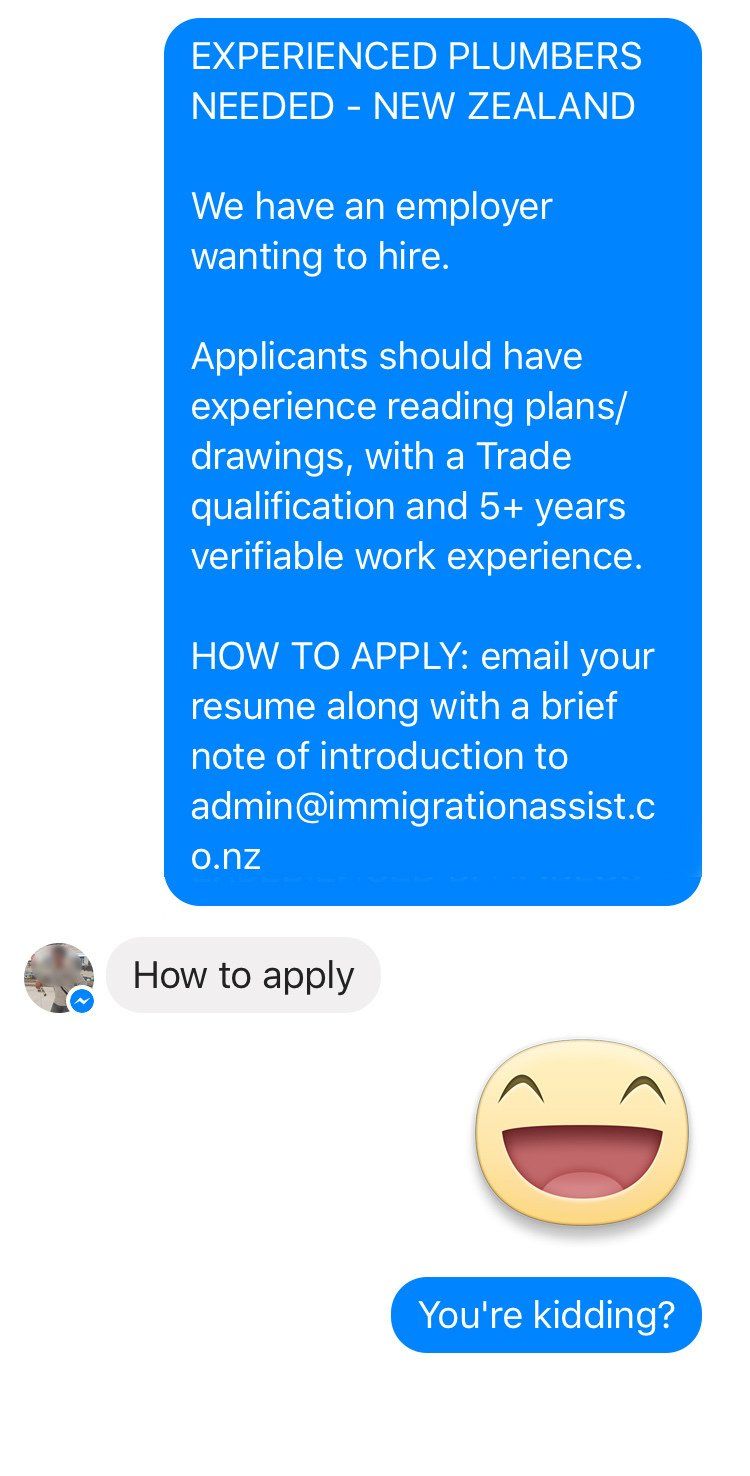
Ever Get Mad at a Customer? Time for a Chatbot!
That Moment You Caps-Lock a Lead
There was a company admin who ran a Facebook Ads campaign, seeking resumés in the construction industry abroad through Messenger.
Immigration Assist’s ad had a compelling enough image for the customer, a clear headline. Importantly, in its copy, the ad anticipated the question that typically gets asked over and over again;

“How to apply?”
Those words were effectively a subheading, and clear instructions followed. The ad’s call-to-action was “Send Message” – via Facebook Messenger – for those who wanted more info. Within hours, the admin guy had a handful of Messenger notifications. At least four of them, despite everything, asked simply the dreaded how to apply
The admin guy snapped by the third. He wrote a response in Messenger to the unfortunate applicant, caps locked:
“SERIOUSLY??? Please READ THE POST. It has all the information on how to apply. Thank you.”
The Customer Never Replied
It’s hardly surprising that the lead went away. Did the admin guy regret it? Frighteningly, no. In his mind, even if he had copy-pasted a standardised reply into Messenger and engaged the fool, he was convinced it would have soaked up time and effort with no assurance that the candidate was even qualified for the job.
The problem was – using caps lock key had guaranteed the lead would never become a client.
The Messenger Chatbot
Here is where a chatbot would have made all the difference. As automated Messenger conversations, Chatbots love this kind of situation. Through a combination of scripted responses and action buttons, a chatbot built in Manychat or Chatfuel could have gently led this candidate through a flow that told him all about the job, about the requirements, about New Zealand, and much more – and naturally, let him know How To Apply.
If the lead wasn’t interested, the bot still could have kept him as a subscriber for future jobs.
Responses Triggered by Comments
Better still, a Facebook Messenger chatbot can be set to respond to specific comments on the ad itself. Depending on the platform used, the admin guy could have grasped the metaphorical nettle and instructed, as the call-to-action;
“Type HOW TO APPLY in comments below for details.”

Cued by the keyword, the chatbot would take over and open a Messenger conversation – and all the information is literally at the candidate’s fingertips via his mobile. The bot could also gather the applicant’s occupation, name, email address, location and phone number and add it to a database.
Automations to Scale
To deal with these sorts of enquiries one by one, and to answer the same questions over and over, isn’t just frustrating. It takes time. Not only composing and personalising each response, but waiting for the user at the other end to reply.
Multiply that by the dozens of candidates who might respond to an ad, and it becomes an impractical task. Precious hours spent dealing with tyre-kickers could mean the genuine leads get sick of waiting and leave the conversation.
A chatbot, or course, responds instantly. To everyone. It can handle multiple conversations. It never loses patience, never gets sarcastic, never sends the wrong response to the wrong recipient (easy to do when you have multiple chats going at once.)
The Business Solution that Pays for Itself
Best of all, with a provider like Conversologie, a chatbot will be up and running, and even optimised month by month, for just a few dollars a day. Compare that with the expense of paying somebody by the hour to handle unqualified enquiries (only during working hours, of course.) Compare it with the unseen messages after hours or overnight. Compare it with the opportunity cost of your own lost time.
Time for a chatbot.


